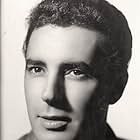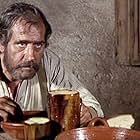María Pacheco (c.1496 - March 1531) , a Spanish lady of the highest rank , was a 16th-century Spanish warrior of the House of Mendoza. She was born in Granada, the daughter of Íñigo López de Mendoza y Quiñones and Francisca Pacheco. There took place The Revolt of the Comuneros (Spanish: Guerra de las Comunidades de Castilla, "War of the Communities of Castile") was an uprising by citizens of Castile against the rule of Charles V and his administration between 1520 and 1521. At its height, the rebels controlled the heart of Castile, ruling the cities of Valladolid, Tordesillas, and Toledo. In 1519, Charles was elected Holy Roman Emperor. He departed for Germany in 1520, leaving the Dutch cardinal Adrian of Utrecht to rule Castile in his absence. Soon, a series of anti-government riots broke out in the cities, and local city councils took power. The rebels chose Charles' own mother, Queen Joanna, as an alternative ruler, hoping they could control her madness. The revolt occurred in the wake of political instability in the Crown of Castile after the death of Queen Isabella I in 1504. Queen Joanna I the Mad, Isabella's daughter, inherited the throne with her Burgundian husband King Philip I. However, Philip died two years into their reign, and their son Charles was only six years old. Due to his youth and Joanna's mental instability, Castile was ruled by the nobles and her father, King Ferdinand II of Aragon, as a regency.The rebel movement took on a radical anti-feudal dimension, supporting peasant rebellions against the landed nobility. On April 23, 1521, after nearly a year of rebellion, the reorganized supporters of the emperor struck a crippling blow to the comuneros at the Battle of Villalar. The following day, rebel leaders Juan de Padilla, Juan Bravo, and Francisco Maldonado were beheaded. The army of the comuneros fell apart. Only the city of Toledo kept alive the rebellion led by María Pacheco, until its surrender in October 1521 .Maria , of delicate health but strong in spirit, figh against the tyranny of King Charles V, becoming ¨Leona de Castilla or Brava Hembra or Centella de Fuego and El último Comunero" real symbol of the oppressed popular liberties.
This epic picture being developed as an adventure movie and plenty of action , sword-play and court intrigues . A mini-biography detailing defense and siege of Toledo city , in which Pacheco managed to escape to Portugal, and lived in Oporto till her death, in March 1531, aged about 35 and she was buried in Oporto Cathedral. This historical film is filled with successive intrigues , betrayal, fencing , battles and fights and it is packed with strong ideological charge . As in the fifties Spain was isolated from other other countries , suffering starvation and shortages and to praise the Spanish nationalism ., the production campany Cifesa financed a lot of historical films . The picture deals with a merciless vendetta ,when Juan de Padilla played by Antonio Casas , one of the main leaders of the Comuneros, is executed in the presence of his wife, Maria Pacheco, she and her his son -played by future filmmaker Rafael Romero Marchent- , decide to revenge his death, a s both of them participate in risked exploits and heroic reacts . The flick is marred by overacting , most of them play similarly to stage actors ; as the influence of the theater in players results to be extreme and embarrassing , specially by Amparo Rivelles who gives a ridiculous and histrionic performance . The settings (Sevilla studios) are acceptable though mostly made in ¨Carton-Piedra (stone)¨ as well as matte-painting . Very good cinematography in black and white by Alfredo Fraile . And atmospheric but boring score by Juán Quintero .
The picture was lavishly produced by CIFESA , the most known production company during Francoist period , that often financed these false but breathtaking historical spectacles . The motion picture was regular though professionally directed by Juan De Orduña .With director Florian Rey formed the production company "Goya Films" . Juán adapted to cinema famous novels such as Zalacaín El Aventurero , Cañas Y Barro , El Frente De Los Suspiros , Nobleza Baturra , Lola Se Va a Los Huertos , being especially known for his historical renditions such as Teresa De Jesus , Alba De América , La Leona De Castilla , Agustina De Aragón and Locura De Amor . His most successful picture was El Ultimo Cuple with Sara Montiel .


















